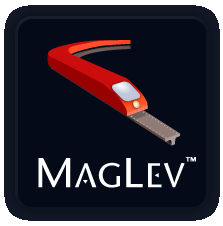Build MagLev from Source
Step 1: Install the MagLev source
Create a new directory on a local (not NFS) file system to hold the MagLev source tree and other files. Change to that directory, then:
$ git clone git://github.com/MagLev/maglev.git
$ export MAGLEV_HOME=$PWD/maglev
Step 2: Install the VM
$ cd $MAGLEV_HOME
$ ./install.sh
You may specify a particular version of the VM, see the detailed instructions at https://github.com/maglev/maglev for details.
Step 3: Build MagLev image and start it
The following command will transform the base Smalltalk image that comes with GemStone/S ($MAGLEV_HOME/gemstone/bin/extent0.dbf) into a Ruby image and put it in $MAGLEV_HOME/bin/extent0.ruby.dbf:
$ rake build:maglev
$ rake maglev:start
Now you should be able to run ruby on MagLev:
$ maglev-ruby -e 'puts "Hello from #{RUBY_ENGINE}"'
Hello from maglev
You can run the tests:
$ rake spec:ci
How it all fits together
MagLev is layered on top of the GemStone/S Virtual Machine, which is written in C++ for optimum performance. To build MagLev, we start with a basic GemStone/S system that has been extended especially for MagLev. Once the MagLev VM is bootstrapped, and the requisite primitives are loaded, it’s ready to run ruby code much like other implementations. The difference is that only MagLev has an integrated distributed object cache with transparent object persistence where multiple concurrent VM’s interact transactionally via shared memory. To handle larger amounts of data, the MagLev system has multi-threaded garbage collection that runs in a separate VM. Due to it’s multi-language nature, MagLev can utilize code written in Ruby, Smalltalk, or C++ (through its FFI to C++, as well as ruby extensions writen directly in C++.)
The build steps described above add the base Ruby classes and objects on top of a standard GemStone/S system, and persist them as a base MagLev image ($MAGLEV_HOME/bin/extent0.ruby.dbf).
The scripts that load the ruby objects into the image are a combination of rakefiles (rakelib/build.rake) and topaz scripts. Topaz is a C++ program that runs a GemStone VM, and provides a command line interface to that VM; see the Topaz Programming Guide.
